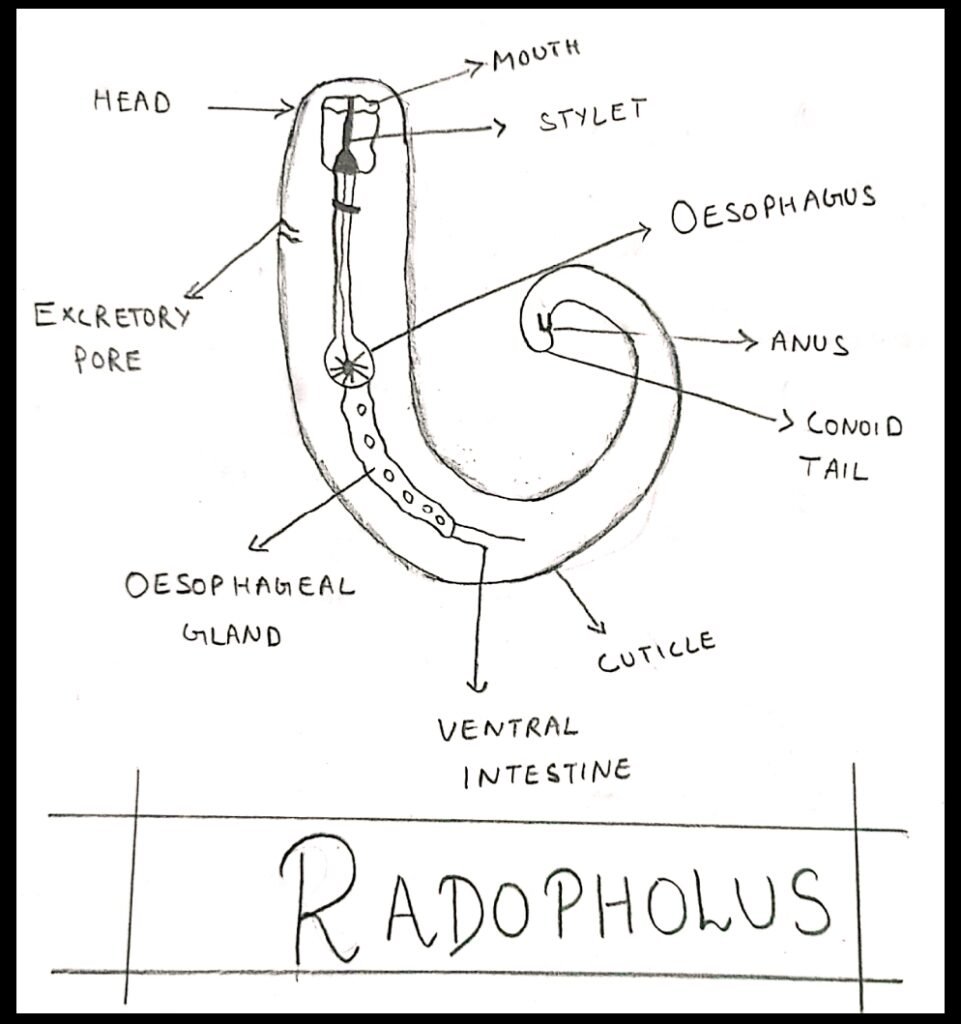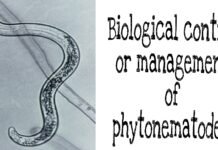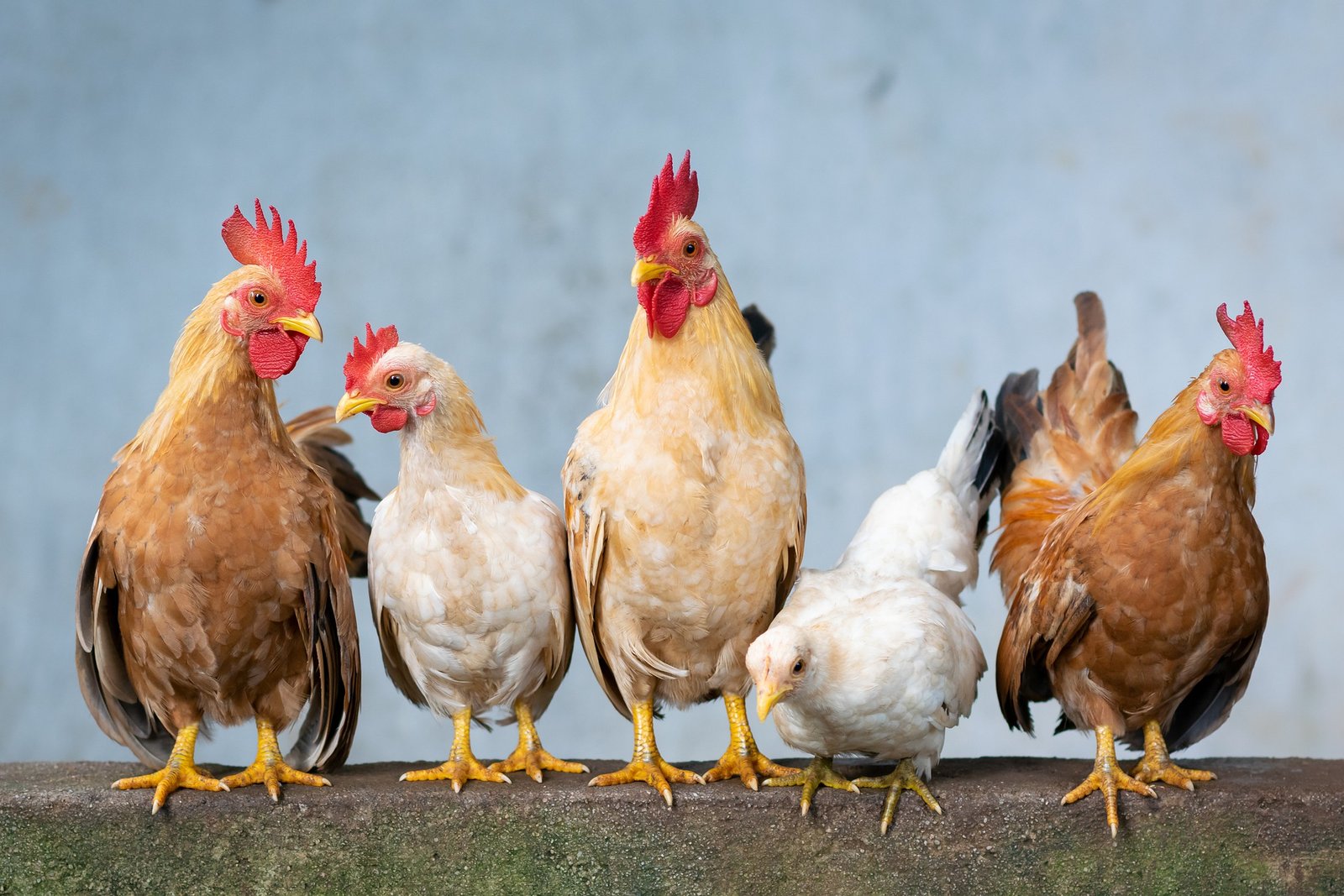Radopholus similis (Burrowing nematode). The generic term Radopholus derived from two Greek words.
Redix = root (it is endoparasitic)
Phelien = loving
The common name was coined after burrowing and migratory habit of nematode.
Systematic position:-
| Phylum | Nematoda |
| Class | Secernentea |
| Order | Tylenchida |
| Family | Pratylencuidae |
| Genus | Radopholus |
| Species | similis |
Diagnostic Features:-

- Vermiform elongated worm with 0.3-0.8mm length.
- Head knobbed, comprises piercing apparatus
- Stylet spear-shaped with the broad knob.
- Body cutacularized excretory pore is oesophageal region.
- Anterior extremity blust, while posteriorly conoid with a rounded tail.
- Oesophageal gland present, overlapping intestine dorsally.
Diagnostic Features of Female Radopholus:-

- Female: vermipre, prominent sclerotized.
- Head with strong piercing apparatus.
- stylet present with a broad knob.
- Oesophageal glands developed and dorsally overlapped to the intestine.
- Vulva median, ovary single (monodelphic and prodelphic).
- Tail long, conoid, blunt-ended.
Diagnostic Features of Male Radopholus:-

- Body slender with poorly developed feeding apparatus.
- Thin stylet with a reduced knob.
- Spicules one pair, almost equal.
- Tail conoid with caudal alae.
- Caudal alae extended up to 2/3 of tail length.
- Oesophagous and oesophagous gland poorly developed.
Distribution and Host:-
- These are majorly inhabited in tropical and subtropical parts.
- But there are distributed worldwide from Europe to Africa
- In India, these were introduced in Kerala through banana suckers.
- Right now these are found in the southern and western ghat region as well as the northeastern part of the country.
- There is a wide range of hosts.
- But they are found to be infested in banana, coffee, tea, sugarcane, tobacco, etc.
- Microhabitat is root.
Read More:– Pratylenchus penetrans (lesion Nematode) Click Here
Biological and life cycle:-
- Mature worms reproduce sexually throughout the year.
- Because of migratory and endoparasitic behavior, female migrated to the root cortex and laid their egg randomly
- Mature eggs hatched into juveniles. All life stages are infections except males because of poorly developed feeding apparatus (indirect developed).
- Life cycle completed in 4-6 weeks at 25-30 °C temperature.
- Randopholus similis can survive up to 6 months are not available and after that can infect a new host.
Read More:–Reniform Nematodes (Rotylenchulus Nematode) Click Here
Management of Radopholus:-
- Roots with numerous pores in growth zone.
- Severe infection causes rooting of roots.
- Later stages of crop turned into yellowing or premature aging forms.
- Falling of leaves and stem.
- Infection can be controlled by proper disposal of infected ratoon.
- Used resistant varieties of crop.
- Treated soil free from nematodes and life stages
- Water treatment with effective organophosphates.
- Biological controls can be applied through predatory insect and hyper parasitic bacteria.
Read More:– Anguina tritici (wheat seed gall nematode) Click Here

















